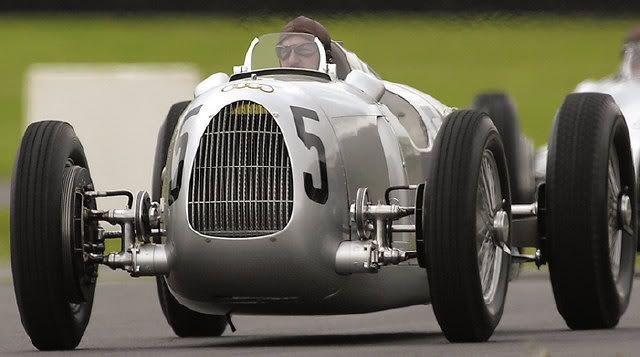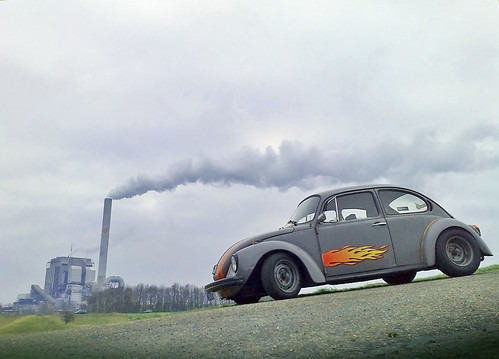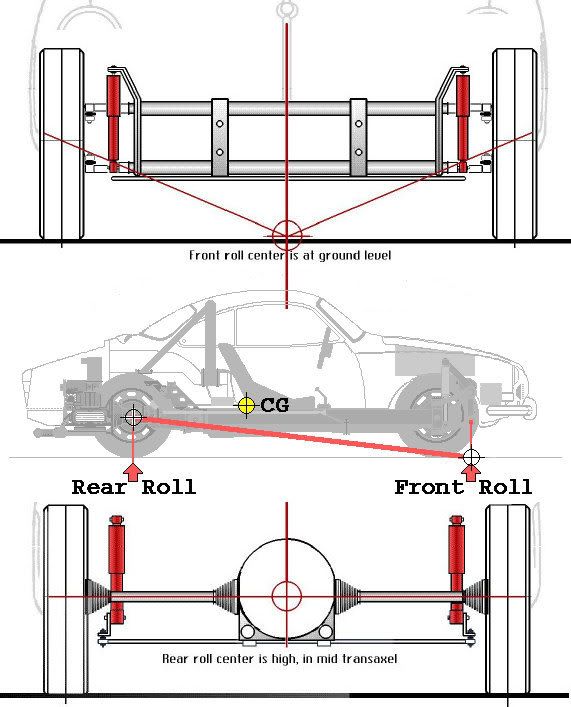
Above: An Auto Union C-Type in action. Your Type 1 front suspension was born on the race track.
Dr. Porsche invented the what we all know as the Type 1 front supension for his series of pre-war Gran Prix winning supercars ... most of which also happened to have swing axles, but that's another story.
The point of this post is to make you consider very carefully before you change your own front suspension.
The Auto Union front axle only has the torsion bars in the lower tube. The top "tube" is actually just mounts for the old style adjustable friction shocks.
Everything geometrically about the Auto Union front suspension and our Type 1 is the same. The question is why did Porsche design this suspension, how does it work as a racing suspension, and why did he think highly enough of it to continue it in the VW and Porsche cars?
The physical design was very light and compact, and used Mother Nature (or maybe Father Physics) to its advantage. As the body rolled from side to side, the torsion bar tubes did too. That made the tires lean, breaking adhesion, and inducing understeer.
The relationship between lean and understeer is direct and predictable.
To get caster to help the tires track straight, the bottom tube was tilted forward just a bit relative to the chassis.
The most important thing was the duty of handling in general was designed into the front end. It had the roll stiffness. The rear end (swing axle in particular) was just along for the ride.
Porsche knew the swing axles were going to tend to break grip, and the geometry of the front end worked in unison to break grip gracefully as well. Competing against the Mercedes W163's, Porsche constantly tinkered with the swing axles on the Auto Unions, finally replacing them with a deDion type rear suspension in the D models, and the over-powered Auto Unions keep winning races.
Look at the ground clearance between the lower torsion tube and the track in the photo above. Looks a lot like your stock VW, doesn't it? Lowering the ride height dramatically changes your geometry a lot and makes your car handle poorly.
That's why I recommend a two-inch drop at maximum. With extra caster shims.
Give the good Doctor his due. He knew what he was doing and had a house full of trophies and awards to prove it.
FJC

